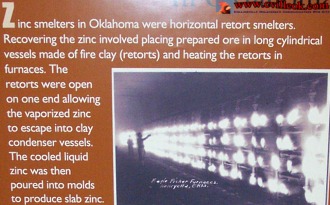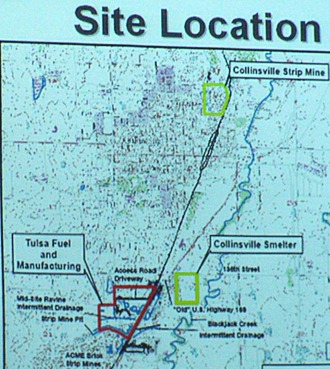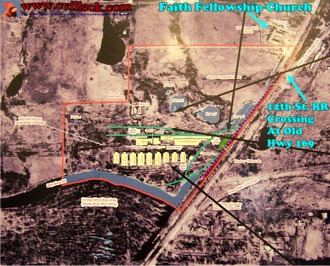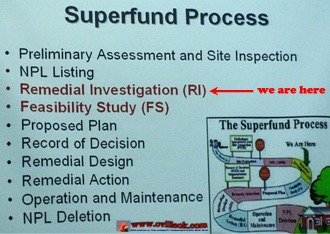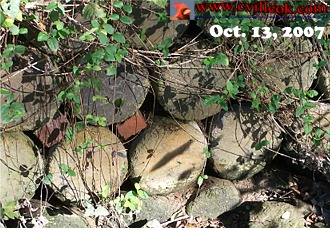This page sponsored
in part by:

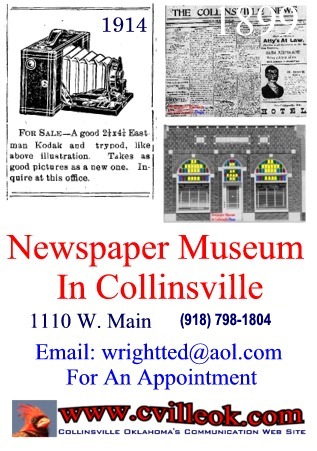
This page sponsored
in part by:


|
Collinsville,
Oklahoma
October 11, 2007 Smelter Site DEQ Test Results |
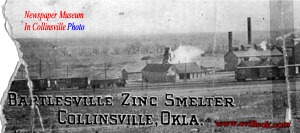
|
This
web site is brought to you by the Newspaper
Museum In Collinsville and the other advertisers appearing on these
pages. If you would like to provide news content or advertisements ...
call Ted Wright (918) 371-1901 or
send email to wrightted@aol.com. 1110 W. Main, Collinsville, OK 74021 |
|
Home
(email questions/comments to wrightted@aol.com). Ted Wright -- last update 10/13/2007 (SmelterDEQresults.html) www.cvilleok.com Copyright 2007 -- Collinsville, Oklahoma |
|
|
 |
|
One of the two former Collinsville zinc smelter sites has been a low priority EPA Superfund site since 1999. Collinsville citizens finally had an opportunity (Oct. 11th, 2007 at an underpublized public meeting at City Hall) to hear results of environmental testing on and near that site. The tests were conducted by the Oklahoma Department of Environemtal Quality (DEQ) in 2005 and 2006. The EPA site is now referred to as the "Tulsa Fuel and Manfacturing" site and is approximately 1.3 miles south of downtown Collinsville on the west side of the railroad tracks. The other smelter site (referred to as "Collinsville Smelter") which is east of the tracks and south of 136th St. North is not a part of the EPA Superfund as a "responsible party" (Phelps-Dodge) will be required to fund the cleanup there.
The tests conducted on the 60-acre "Tulsa Fuel and Manufacturing" site found obviously high levels of zinc, lead, arsenic and cadmium metals in the soil. Some of the off-site test also showed elevated levels of hazardous metals but they were at sites where obvious smelter slag or retort (connies) had been relocated for retaining walls or driveway material, etc. Ore was shipped into the Collinsville smelters via rail cars from all over the world while the smelters were in operation (from 1911 to the mid-1920s). Along with the soil, samples of air, water, fish, blackberrys were collected and tested for any hazards to humans or animals. The fish tissue test were conducted in 1999 and no fish were found in the ponds but the 7 catfish from the strip mine pit showed no unacceptable levels of risk. The other tests were from 2005 and 2006. 7-day test data showed no evidence of an aerial plume carrying hazardous material to offsite locations. The air sampling was performed to determine if the waste material was capable of moving off-site via air/wind movement. DEQ's consultant also did shallow soil sampling to investigate the possibility of a historic aerial plume originating from the site. The black berries tested along the railway showed some signs of higher than normal metal contamination but it was apparently in the dust on the exterior of the berries as the berries tested OK once they were washed. The well water onsite was deemed unacceptable for drinking with zinc and cadmium contamination. Surface water tested OK except for sediment at the bottom. No unacceptable levels of metals were detected in any of the offsite water tests. The cleanup plan has yet to be designed but options include onsite capping & containment/managened land use or removal of hazardous material to be an approved landfill site (with a rough estimate of $35 million removal cost). Once the cleanup plan is released (at a yet unannounced public meeting) the public will have 30 days to respond. Note: I am
not an expert and am merely reporting the DEQ's information presented.
It was first noted that any human faces environmental risks no matter
where they live on this earth. The only specific risk mentioned was
cancer with the EPA policy on levels of risk requiring "management"
at 1 in 10,000. |
